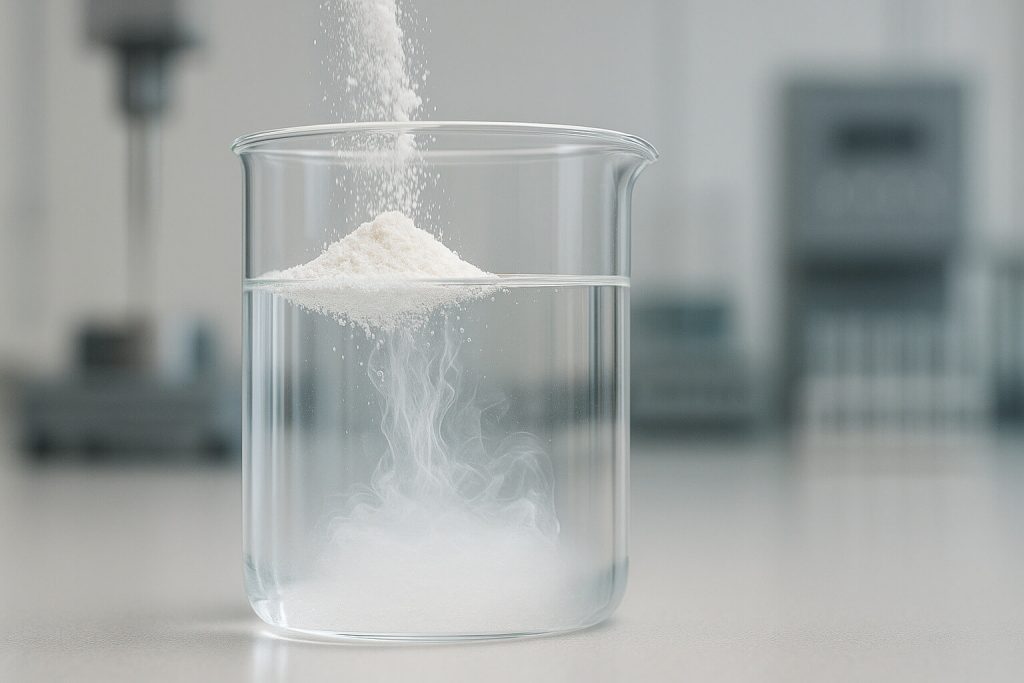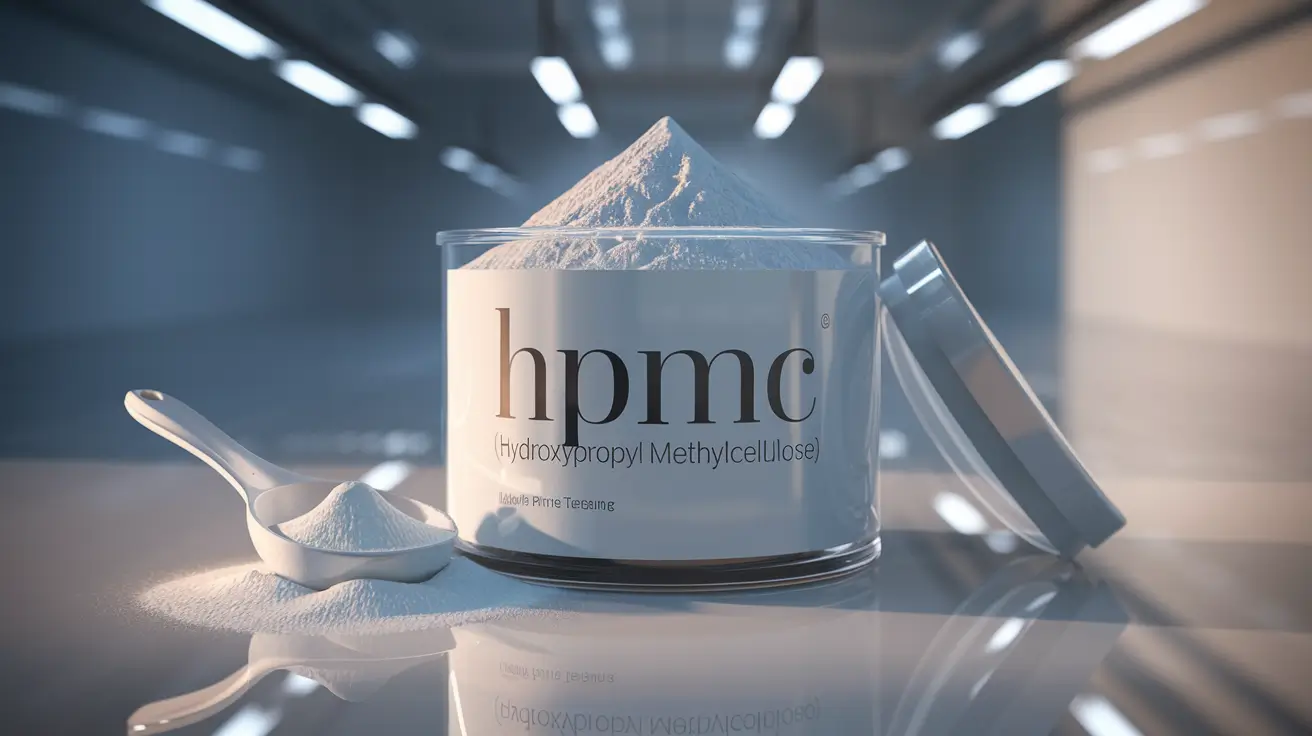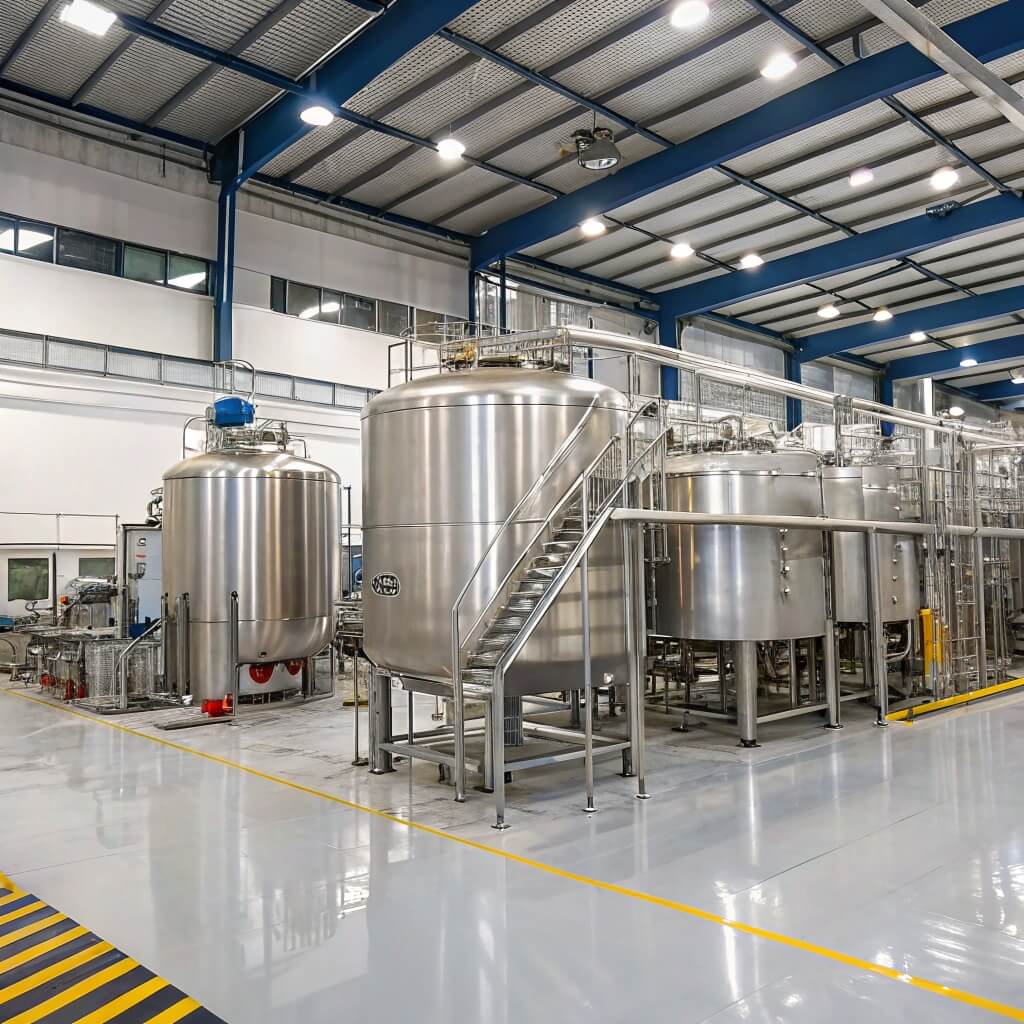Classifying hydroxypropyl methylcellulose (HPMC) grades effectively is crucial for various applications across industries. Understanding the different grades of HPMC and their corresponding characteristics can greatly influence formulation success. This article will delve into the classification of HPMC grades, why this classification is vital, and how it impacts end-use performance. We aim to guide decision-makers like purchasing managers in industrial sectors, such as pharmaceuticals, food production, and construction, by emphasizing practical considerations and real-world applications.

1. What Is HPMC and Why Is Its Classification Important?
Hydroxypropyl methylcellulose (HPMC) is a semi-synthetic polymer derived from cellulose, renowned for its versatility in multiple applications. Used primarily as a thickening agent, binder, and emulsifier, it finds application in pharmaceuticals, food, construction, and many other sectors. But here’s the kicker: the classification of HPMC grades is paramount because the characteristics of each grade profoundly influence product performance.
The significance of classifying HPMC grades lies in their molecular weight variations, which dictate key properties such as viscosity, solubility, and gel strength. These properties are not merely academic; they directly impact how HPMC interacts with other ingredients in formulations, affecting texture, stability, and overall effectiveness. For instance, in pharmaceuticals, high molecular weight HPMC is essential for controlled-release formulations, ensuring medications release at a consistent rate. In contrast, low molecular weight HPMC is favorable for applications needing quick dispersibility, like instant soups or sauces.
Understanding the classification helps businesses make informed decisions when developing products that align with consumer expectations. For example, food manufacturers can select HPMC grades based on texture requirements, while pharmaceutical developers focus on bioavailability and release profiles. As the industry embraces targeted formulations, knowing which HPMC grade to use becomes a competitive advantage, enhancing product quality and efficiency.
| HPMC Classification Category | Rango de peso molecular | Características clave | Aplicaciones principales |
|---|---|---|---|
| Bajo peso molecular | 10.000 – 50.000 | Fast dissolving, low viscosity | Instant foods, some pharmaceuticals |
| Peso molecular medio | 50.000 – 100.000 | Viscosidad y solubilidad equilibradas | Food emulsifiers, binding agents |
| Alto peso molecular | 100,000 – 500,000 | High viscosity, strong gel formation | Sustained-release drugs, construction |
2. How Are HPMC Grades Classified?
The classification of HPMC grades hinges primarily upon their molecular weight, which directly influences their behavior in varied applications. What’s the real story? This classification not only aids in choosing the right grade for a particular formulation but also helps predict the performance characteristics of HPMC in use.
HPMC is typically categorized into three main grades based on molecular weight: low, medium, and high. Low molecular weight HPMC has a molecular weight ranging from approximately 10,000 to 50,000, making it suitable for applications where rapid hydration is essential. This grade offers low viscosity and quick solubility, which is particularly beneficial in instant food products like dehydrated soups and sauces.
Medium molecular weight HPMC, falling between 50,000 and 100,000, offers a balance of viscosity and solubility. It is widely used as an emulsifier, stabilizer, or binding agent in various formulations, including bakery products and dairy alternatives. On the other hand, high molecular weight HPMC, with molecular weights ranging from 100,000 to 500,000, exhibits high viscosity and gel-forming capabilities. This grade is often used in pharmaceutical applications, offering extended release characteristics and preventing sedimentation in liquid formulations.
The classification becomes crucial when considering regulatory requirements, as different applications might necessitate adherence to specific quality and purity standards. As industries demand precise formulations, understanding HPMC classification helps streamline product development, reduce errors in ingredient selection, and ensure compliance with industry regulations.
| Grado HPMC | Rango de viscosidad | Solubility Characteristics | Usos comunes |
|---|---|---|---|
| Bajo peso molecular | 10 – 500 cP | Rapidly dissolving | Instant soups, pharmaceuticals |
| Peso molecular medio | 500 – 1,500 cP | Moderately soluble | Emulsifiers, food binding agents |
| Alto peso molecular | 1,500 – 10,000 cP | Slowly dissolving | Sustained-release drugs, construction materials |
3. What Are the Practical Applications of Low Molecular Weight HPMC?
Low molecular weight HPMC is particularly valued in applications requiring fast solubility and a smooth texture. Ready for the good part? Its quick-dissolving nature makes it ideal for a variety of food products, especially instant meals. For instance, in instant soups and sauces, low molecular weight HPMC contributes to a smooth and homogenous mixture by quickly dispersing in water, enhancing consumer satisfaction with a product that rehydrates quickly and evenly.
In the pharmaceutical sector, low molecular weight HPMC serves a critical role as an excipient in formulations requiring rapid disintegration. An excellent example is its use in immediate-release tablets, where effective binding and rapid dissolution are paramount for therapeutic efficacy. Studies have shown that utilizing low molecular weight HPMC can significantly enhance the disintegration time of tablets, leading to better bioavailability of the active ingredients.
Moreover, in construction materials, low molecular weight HPMC acts as a water-retaining agent, crucial for dry-mix mortars. By slowing the evaporation of water during the curing process, it improves the adhesion and durability of cementitious materials. This property ensures that the mortar remains workable for longer, allowing for adjustments during installation.
The versatility of low molecular weight HPMC positions it as a key ingredient across industries, influencing both product performance and consumer satisfaction. Choosing the right grade based on application needs ensures that manufacturers can meet specific formulation requirements while maintaining quality.
| Área de aplicación | Key Benefits of Low Molecular Weight HPMC | Ejemplos |
|---|---|---|
| Industria alimentaria | Rapid hydration, smooth texture | Instant soups, sauces, flavored beverages |
| Productos farmacéuticos | Quick disintegration for better bioavailability | Comprimidos de liberación inmediata |
| Construcción | Improves adhesion and workability | Dry-mix mortars, tile adhesives |
4. What Benefits Does Medium Molecular Weight HPMC Offer?
Medium molecular weight HPMC stands out for its versatility and applicability across various industries. But here’s the kicker: this grade strikes a balance between low and high molecular weight HPMC, making it a favored choice for numerous formulations.
In the food industry, medium molecular weight HPMC is often employed as an emulsifying agent. Its ability to stabilize mixtures ensures uniform distribution of ingredients, which is crucial in products like salad dressings and sauces. By enhancing texture and mouthfeel, medium molecular weight HPMC supports the creation of creamy, stable emulsions that cater to modern consumer preferences.
In pharmaceuticals, this HPMC grade is commonly used as a binder in tablet formulations. Its moderate viscosity assists in uniform blending of active ingredients and excipients, resulting in tablets that are easier to manufacture, handle, and consume. Additionally, medium molecular weight HPMC can slow down the release of active pharmaceutical ingredients, making it an excellent choice for controlled-release formulations, thus enhancing therapeutic efficacy.
Moreover, in construction applications, medium molecular weight HPMC aids in improving workability and consistency of various products, such as joint compounds and leveling compounds. It enhances the performance of construction materials, leading to smoother finishes and increased adhesion.
With its diverse range of applications, medium molecular weight HPMC not only meets industry standards but also enhances product performance. By tailoring the selection of HPMC grades to specific formulation needs, manufacturers can achieve significant improvements in product quality and consumer acceptance.
| Área de aplicación | Key Benefits of Medium Molecular Weight HPMC | Ejemplos |
|---|---|---|
| Industria alimentaria | Stabilizes emulsions, enhances texture | Salad dressings, dairy products |
| Productos farmacéuticos | Uniform binding for better manufacturing | Formulaciones de liberación sostenida |
| Construcción | Improves workability, consistency | Joint compounds, formulated flooring materials |
5. Why Is High Molecular Weight HPMC Essential in Formulations?
High molecular weight HPMC is distinguished by its substantial viscosity and gel-forming capability, making it essential in numerous applications. What’s the real story? Its unique properties make it vital in settings where thickening, stabilization, or controlled release of ingredients is required.
In the pharmaceutical industry, high molecular weight HPMC is often utilized in sustained-release formulations. By providing a slow and controlled release of active substances, it increases the efficacy of medications, leading to better patient compliance. This is particularly beneficial for chronic conditions where consistent medication levels are vital. Research has demonstrated that pharmaceutical formulations using high molecular weight HPMC can provide predictable drug release profiles, enhancing therapeutic action.
In food applications, high molecular weight HPMC plays a crucial role in stabilizing and thickening various products. For example, it is frequently found in ice creams and sauces, where it helps maintain a desirable mouthfeel while preventing ice crystal formation. This enhances the overall quality and consumer experience.
Furthermore, high molecular weight HPMC is indispensable in construction materials, particularly for dry-mix mortars and adhesives. The polymer’s ability to retain water aids in achieving optimal adhesion, even in challenging environmental conditions. This ensures that mortar remains workable and adheres effectively once mixed.
The significance of high molecular weight HPMC is evident across various industries, promoting efficiency, safety, and quality. Manufacturers can leverage these properties to develop superior products that meet consumer demands and regulatory requirements effectively.
| Área de aplicación | Key Benefits of High Molecular Weight HPMC | Ejemplos |
|---|---|---|
| Productos farmacéuticos | Controlled drug release for improved compliance | Extended-release capsules, gels |
| Industria alimentaria | Thickening and stabilization for quality | Ice creams, sauces |
| Construcción | Enhanced adhesion and water retention | Dry-mix mortars, adhesives |
6. How Does Molecular Weight Affect HPMC Performance?
Molecular weight is a key determinant of HPMC performance across different applications. Ready for the good part? Understanding how it influences viscosity, solubility, and overall functionality is crucial for formulators aiming for the best results.
In general, higher molecular weight HPMC grades exhibit increased viscosity at lower concentrations. This property is advantageous in applications that require thickening or stabilizing agents, such as in pharmaceutical gels or liquid formulations. High viscosity levels allow for the production of stable emulsions and suspensions, resulting in a consistent product that meets consumer expectations.
On the other hand, low molecular weight HPMC grades dissolve more quickly, making them suitable for applications that demand rapid dispersion. For instance, in instant food products, quick hydration is essential for consumer satisfaction. Low molecular weight forms ensure that products can be quickly reconstituted with water, maintaining the desired texture and flavor.
Moreover, molecular weight also impacts shelf life and stability. Products formulated with high molecular weight HPMC demonstrate better moisture retention and protection against degradation, ensuring longevity and quality over time. In pharmaceuticals, this translates to extended shelf life for medications, a critical consideration in compliance and safety.
By understanding the relationship between molecular weight and performance, formulators can make informed choices about HPMC selection that align with their specific requirements, enhancing both product quality and efficacy.
| Peso molecular | Impacto de la viscosidad | Solubility Characteristics | Impacto de la aplicación |
|---|---|---|---|
| Bajo peso molecular | Baja viscosidad | Se disuelve rápidamente | Quick-hydrating formulations |
| Peso molecular medio | Viscosidad moderada | Moderately soluble | General-purpose applications |
| Alto peso molecular | High viscosity, forms stable gels | Slowly dissolving | Controlled release in pharmaceuticals |
7. What Regulatory Considerations Should Be Taken into Account?
Navigating the regulatory landscape is paramount for ensuring the safe and effective use of HPMC across various industries. What’s the real story? Understanding regulatory requirements helps manufacturers avoid compliance issues that could compromise product safety and market access.
In the pharmaceutical sector, HPMC is subject to stringent regulations set forth by organizations such as the FDA and EMA in order to ensure drug safety and efficacy. These agencies establish guidelines surrounding acceptable molecular weight ranges and purity levels for HPMC used in medications. Compliance with Good Manufacturing Practices (GMP) is foundational in these processes to ensure that all ingredients, including HPMC, meet established standards.
In the food industry, similar regulations apply. The FDA classifies HPMC as Generally Recognized As Safe (GRAS) when used within specified limits. Producers must adhere to labeling requirements and safety evaluations to ensure consumer protection. This complicates the selection process, as the decision must align with regulatory standards.
Construction materials, although typically less regulated than food or pharmaceuticals, still require compliance with industry-specific guidelines. HPMC used in building materials must undergo safety assessments to confirm its effectiveness and suitability in construction applications.
By maintaining an understanding of relevant regulations and implementing best practices, manufacturers can safeguard their products while improving trust with consumers and regulatory bodies alike.
| Organismo regulador | Key Focus Areas | Compliance Requirements |
|---|---|---|
| FDA | Safety and efficacy for pharmaceuticals | Dosage limits, purity, and labeling |
| EMA | Drug quality assurance | Comprehensive testing and quality checks |
| Health Canada | Food safety assessments | Acceptable ingredient levels for food uses |
8. How Can You Optimize HPMC Selection for Your Needs?
Optimizing HPMC selection requires a strategic approach to formulation that takes into account molecular weight, application needs, and end-user expectations. This is where it gets interesting: the right choice of HPMC grade not only improves product quality but also influences efficiency throughout the development process.
First and foremost, understanding application-specific requirements is critical. Factors such as desired viscosity, solubility characteristics, and the role of HPMC in the formulation must be clearly defined. Conducting thorough trials with different HPMC grades can reveal insights into how they perform when blended with various ingredients.
Next, integrating feedback from sensory evaluations can significantly impact formulation choices. Gathering data from consumers or end-users about texture, mouthfeel, and overall satisfaction can inform decisions regarding which HPMC grade provides the best results.
Furthermore, staying abreast of the latest research can help formulators discover newer grades or blends of HPMC that might offer improved performance characteristics for their applications. Engaging in industry research and attending seminars or conferences can provide valuable networking opportunities and insights into innovative uses of HPMC.
By focusing on these strategies, manufacturers can ensure their formulations meet specific performance metrics while maintaining compliance with regulatory standards, ultimately benefiting both the producer and the consumer.
| Estrategia de optimización | Action Steps | Desired Outcomes |
|---|---|---|
| Assess Specifications | Define viscosity, solubility needs | Match HPMC to application requirements |
| Realizar pruebas | Perform trials on different molecular weights | Identify the most effective formulation |
| Engage in R&D | Stay updated on industry advancements | Optimize product performance and marketability |
9. What Trends Are Emerging in HPMC Utilization?
The landscape of HPMC utilization is evolving rapidly, influenced by emerging trends that reflect market demands and technological advancements. Ready for the good part? Keeping an eye on these trends can help manufacturers adapt and capitalize on new opportunities.
Sustainability is one of the most pressing trends driving material selection. Consumers have become increasingly eco-conscious, leading companies to explore natural and biodegradable alternatives. High-quality HPMC products align with this demand, as they are derived from cellulose and can contribute to greener formulations in both food and pharmaceutical applications.
Moreover, the movement towards clean-label products has gained traction. Consumers are seeking transparency in ingredients, leading brands to focus on natural sources like HPMC. This aligns perfectly with the growing desire for products free from artificial additives, bolstering the market perception of HPMC as a safe and effective ingredient.
Technological advancements are also shaping how HPMC is used in formulations. Innovations in manufacturing processes have led to the creation of customized grades of HPMC that cater to specific applications, enhancing performance where pertinent.
By recognizing these emerging trends, manufacturers can better position their products to meet evolving consumer expectations, staying ahead of the competition in an ever-changing marketplace.
| Tendencia | Impact on HPMC Utilization | Strategic Opportunities |
|---|---|---|
| Sostenibilidad | Increased demand for eco-friendly products | Develop green formulations with HPMC |
| Clean Labels | Focus on safety and ingredient transparency | Showcase HPMC as a natural ingredient |
| Technological Advances | Customization of HPMC grades | Innovate product offerings based on consumer needs |
10. Where Can You Find Reliable Information About HPMC Grades?
Accessing accurate and reliable information is key for companies looking to make informed decisions about HPMC grades. What’s the real story? A plethora of resources exists to assist manufacturers in understanding the properties, applications, and regulatory considerations of HPMC.
Leading suppliers often provide technical data sheets that outline molecular weight specifications, characteristics, and intended applications of their HPMC products. These documents offer essential references for formulators determining which grade to use for specific products.
Industry publications, research journals, and white papers serve as valuable sources of insight into the latest advancements in HPMC technology, including case studies and market trends affecting HPMC utilization. Staying connected with academic institutions and research organizations can also foster genuine engagement with the scientific community.
Participating in relevant conferences, trade shows, and networking events allows professionals to share experiences, seek advice, and learn from one another about best practices and innovations in using HPMC.
By leveraging these resources, companies can significantly enhance their understanding of HPMC, ensuring they select the appropriate grades to maximize product performance.
| Information Source | Type of Content | Beneficios clave |
|---|---|---|
| Supplier Technical Data | Specifications, application information | Access to precise product details |
| Publicaciones de la industria | Research articles, case studies | Insight into trends and regulations |
| Conferencias y Networking | Workshops, presentations | Opportunities for knowledge exchange |
Sección de preguntas frecuentes
Pregunta 1: ¿Qué es HPMC?
HPMC, or hydroxypropyl methylcellulose, is a cellulose derivative used as a thickening agent, binder, and emulsifier across various industries, including pharmaceuticals, food, and construction.
Pregunta 2: How does HPMC classification work?
HPMC grades are classified based on molecular weight, which affects their viscosity, solubility, and overall functionality, enabling their use in different applications.
Pregunta 3: What are the applications of low molecular weight HPMC?
Low molecular weight HPMC is commonly used in instant food products, pharmaceuticals, and construction materials where quick solubility and good adhesion properties are required.
Pregunta 4: Why is regulatory compliance important for HPMC?
Compliance with regulations ensures that HPMC products are safe, effective, and meet industry standards, thereby protecting consumers and enhancing the credibility of manufacturers.
Pregunta 5: How can I optimize my HPMC selection?
To optimize HPMC selection, consider application requirements, conduct trials, and analyze performance to ensure that the chosen grade meets your specific needs effectively.




